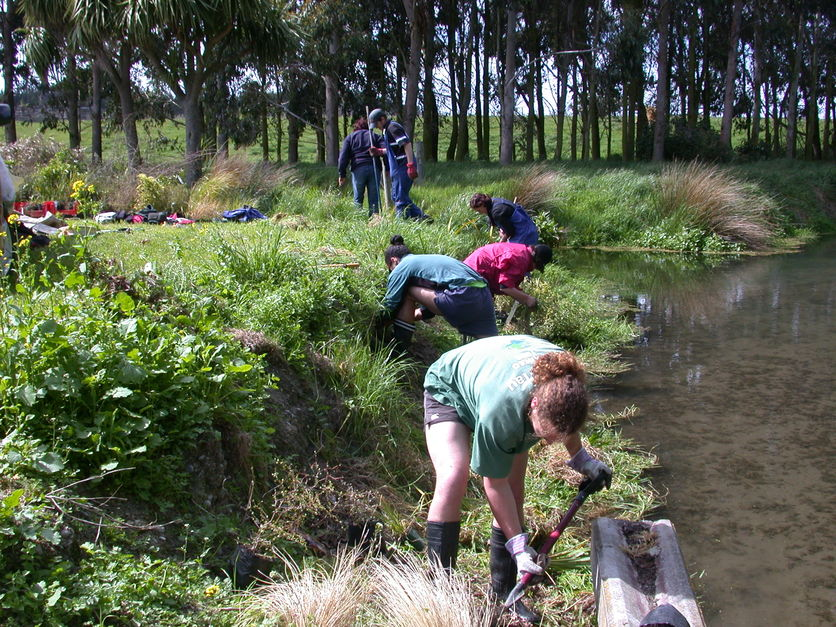Y2S Riparian Zone Restoration
Sep 18, 2021 08:30 - Sep 11, 2021 13:00
Location: Mackey Creek
Riparian Restoration:
Riparian areas are lands that occur along watercourses and water bodies. Typical examples include flood plains and streambanks. They are distinctly different from surrounding lands because of unique soil and vegetation characteristics that are strongly influenced by the presence of water.
General indicators of riparian areas include:
- Vegetation
The kinds and amounts of vegetation differ from adjacent upland vegetation because more water is supplied to plants from the associated watercourse or water body. - Soil
Soil in natural riparian areas consists of stratified sediments of varying textures that are subject to intermittent flooding or fluctuating water tables that may reach the surface. The duration of soil wetness depends on the water levels of the adjacent water body. - Water
Riparian areas are directly influenced by water from a watercourse or water body. They occur along natural watercourses or next to natural lakes and constructed water bodies such as ditches, canals, ponds, and reservoirs.
Because of their variation across the country, riparian areas function in different ways. In spite of their differences, all riparian areas possess some similar ecological characteristics such as energy flow, nutrient cycling, water cycling, hydrologic function, and plant and animal population. These functions give riparian areas unique values relative to the surrounding landscape.

